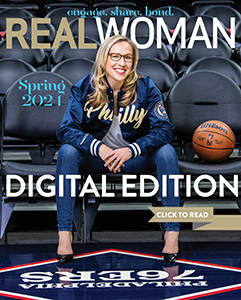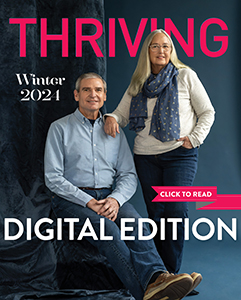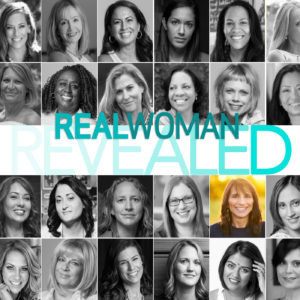Especially around this time of year, finding some extra funds and donating to charity feels pretty good, but with some many international and local needy nonprofits from which to choose—many of which are doing great, important work—it can be too overwhelming to tackle.
Deciding how to give to charity requires some thought, ideally, a yearly giving plan. Real Woman asked Michelle Cash, vice president of grants and programs for the Princeton Area Community Foundation, which promotes community philanthropy, for her expert advice on how to develop a yearly giving plan so you focus on what matters, and say no to what doesn’t.
 RWO: Rather than giving haphazardly, what does developing a giving plan mean?
RWO: Rather than giving haphazardly, what does developing a giving plan mean?
Cash: I talk all the time to individuals, groups, families, on what philanthropy looks like. One of the biggest things we tell people is that the best way to make a plan is to think of it as three buckets.
Bucket #1 Social Giving: Your friend is participating in a walk. You’ve been invited to a benefit of some kind. You’ve been invited to a friend’s house to hear about an organization they’re involved with. It’s the social obligations that come up.
Bucket #2 Who You Are: Giving to your house of worship, to your alma mater, to your kid’s school. That’s perfectly appropriate and part of what we do and who we are.
Bucket #3 The Strategic Bucket: This bucket encompasses what you as an individual or as a family really think deeply about, what issues you care about, not only by what you are going to give but how you are going to get involved. These are the conversations and opportunities to have with your kids or grandkids. What are our family values? What matters most to us?
Think about what you want to put into each bucket. Buckets #1 and #2 are sort of the ones you do without thinking about them a whole lot. But that third bucket, the strategic bucket is where you put your time, energy and focus. So you do the research on what the organizations are and what the issues are that you care about.
Then you can find those organizations in your community who are doing work on the issues you care about, and get to know them. There are resources available. There’s a website called Guidestar where you can get basic financial information on the organizations that you are interested in, to make sure they are compliant with the IRS, that your donations will be tax deductible if that’s important to you.
The best way to do this is to really get to know the organization. Call them. Ask them questions. Who do you serve? Where does it come from? Ask if you can visit. Ask if there are volunteer opportunities. Nonprofit organizations love to hear from donors. They love getting people who are interested in more than writing a check, who really want to become partners on the solutions they are working on.
RWO: How do you determine what your giving budget should be?
Cash: We always say, give until it feels good. Your giving should stretch you. It should get to the point where it’s significant enough where you feel you’re making a mark, you’re saying something important about who you are by what you’re giving.
It’s not a cup of coffee, but it’s not your rent either. It’s somewhere in between and that place is different for everybody. But it’s really important that it’s significant enough that it feels good to you. That you’ve really done something important. You should set that amount at the beginning of the year and stick to it as a plan.
Having that strategic focus makes it easier to say no amid the blizzard of letters and phone calls and everything else you get this time of year. It’s easy to say, “I’m impressed with what you are trying to accomplish, but as a family we’ve decided to focus on the environment this year. Or we’ve decided to focus on hunger in our community this year.” It’s a very polite way and most nonprofits understand completely.
RWO: Is it something you should be reviewing each year?
Cash: It depends. You can either foster or develop lifelong passions for issues. The big changes in this world get made by people who just can’t let a problem go. It’s good to support lots of organizations but it’s best to really think about what it is you want to accomplish with your philanthropy and with your volunteer time, and to get involved and make those solutions happen.
RWO: How can consumers avoid the clutter and the solicitations?
Cash: Put all those letters you get in a pile, and separate those into the three buckets. The fourth pile is the discard; we just can’t do this pile. Just go through the letters—and this is a great exercise to do as a family—and just go through those three piles. The need in the world is endless, but the more we all do to be strategic about how we give, if everybody did that then those issues would all have those champions within them that help move the needle.
RWO: Are better times of year to give, or are there things to not do that cut your giving?
Cash: Like shopping, it’s best not to do giving impulsively. It’s best to think about it and take time with it. Everybody has a different budget cycle so you should give through the course of year in a way that makes sense in a way your budget goes. It doesn’t make any difference to the organization. If they are good budgeters and are well managed then it doesn’t matter. They would love to have it at the same time every year because then it helps them plan but they want a relationship with you, so whenever it makes sense for you. This time of year, everybody feels pressured to give, but if you’ve been generous all year long, you’re less likely to feel that pressure.
Be careful, especially in December, to get receipts for your contribution. Most organizations will send you a letter stating this is your donation, you received nothing in return for it. That’s the IRS standard for deductibly. That the organization is a tax-exempt organization and that you received nothing in return for your donation.
When you buy tickets or do something else, you are receiving a benefit back for your donation, so it’s not fully tax deductible. Most of the time when you buy tickets or something, you’ll get a letter saying, this portion of your tickets is tax deductible. The IRS calls this a “personal benefit”. You’re not allowed to personally benefit from your donation.
RWO: So, you can’t deduct the Girl Scout cookies you buy, but it still accounts for your giving?
Cash: It’s not tax exempt. Be aware that buying things from any organization is good but you’re cutting the amount that goes to serve the causes that you are interested in. Again, that’s in that nice bucket, the social bucket, but it’s not in the strategic bucket. If at all possible, strategy giving should be done with no strings attached. You should thoroughly understand the issues as much as you can. You should comfortable with the organization you are giving to and you should give it to them as much as you can for them to use in a way that best meets their needs. Ideally good philanthropy is about a relationship as about an exchange of dollars.
RWO: Explain how community foundations work, for people who want to donate through organizations such as yours?
Cash: Community foundations are like savings banks for philanthropy. You come here to open a fund with us. You put in your philanthropic dollars. We require a minimum of $10,000 and ask you to keep a balance of $10,000 in your account. That’s way smaller than a private foundation.
Once you put your dollars into your fund here, you can take that tax deduction right away. We can help you figure out how to make the difference you want to make in the world. We will help you grant that money out in a way that suits your needs.
Community foundations are a big deal in philanthropy. There are 700 or some across the country. They are not a big deal in this part of the world. There are tons in Pennsylvania and across the Midwest, tons in California. They’ve been around 100 years. They were the brainchild of Midwestern Robber Barons, who said you know, almost everyone should be a good philanthropist and they should have the resources of a private foundation, so they created this aggregated model.






